Male vs. Female Robins: How to Tell the Difference
Last Updated on
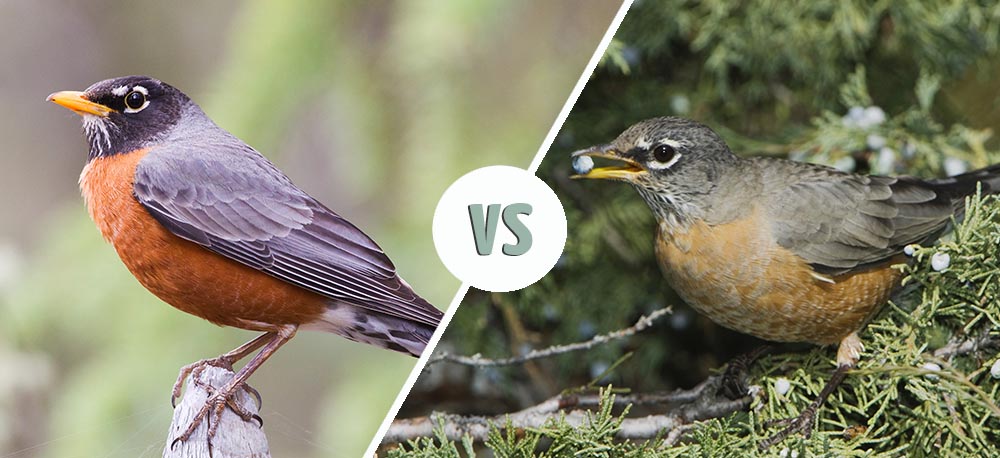
American robins are lovely songbirds that belong to the thrush family of birds. They are the most common thrush birds in North America. They can often be spotted hanging around in backyard feeders, gardens, and parks, but they also live in shrub lands and woodlands. Robins, especially males, have a gorgeous song—they are the first bird you hear in the morning and the last one you hear in the evening.
Keep reading this article to discover all the differences that make up male and female robins. These lovely birds have fascinating behavior patterns that make it easy to recognize their genders.

Visual Differences
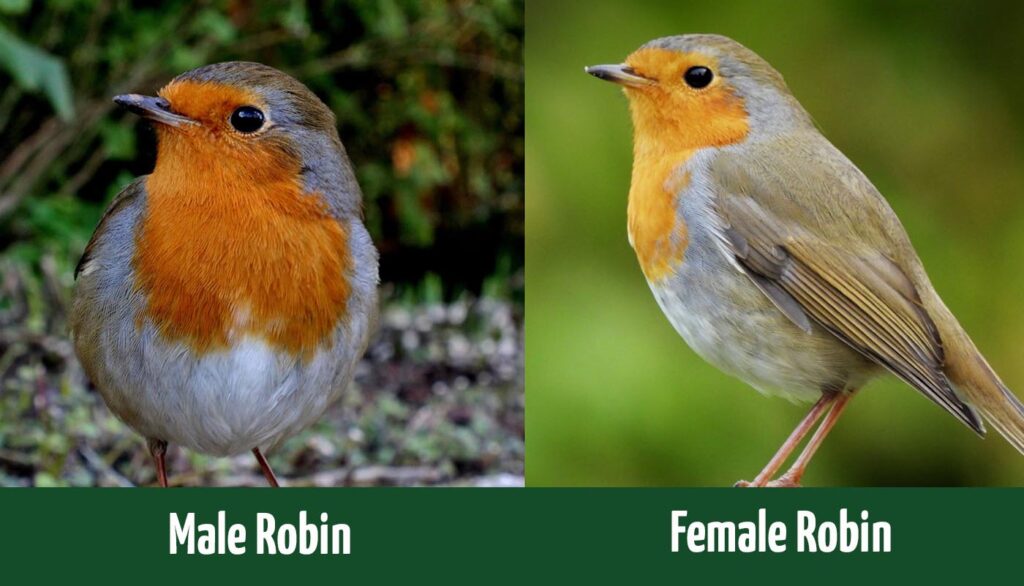
At a Glance
- Average size (adult):9–11 inches
- Average weight (adult): 3 ounces
- Average wingspan: 2–15.8 inches
- Responsibilities: Hunting, protecting the territory
- Plumage color: Vivid, colorful shades of red and black
- Average size (adult):9–11 inches
- Average weight (adult): 6 ounces
- Average wingspan: 2–15.8 inches
- Responsibilities: Building, nesting
- Plumage color: Dull, pale shades of red, copper, and black
Robins 101
American Robins are large songbirds that most commonly live in gardens, parks, and pastures, as well as woodlands, shrub lands, and pine forests. Robins are members of the thrush family and the largest North American thrush. Male and female robins are almost identical, with minor coloring differences that can help you recognize one gender from the other. Their appearance is characterized by warm, vivid orange underparts and a white lower belly. They have round black heads with bright-colored beaks. Compared to the male’s rich, vivid plumage, the female’s plumage seems washed out and dull.
Nevertheless, these birds still have a stunning and attractive overall appearance, making them a lovely sight in residential areas. The most noticeable differences will be in the robin’s habits and behavior. Robins tend to engage in courtship feeding, and if you see this ritual, you can catch a glimpse of the male robin giving food to the female. A female is more likely to build a nest and incubate eggs.
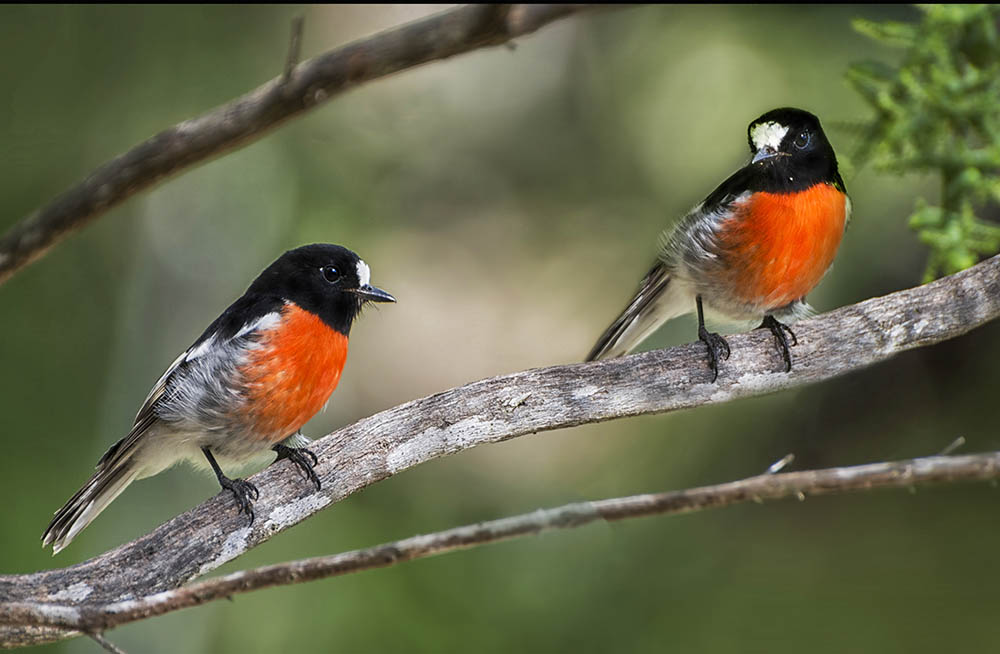
Male Robin Overview
Personality / Character
Male robins are usually incredibly territorial. You’ll hear their song or call when they are protecting their territories or attracting a mate. They tend to sing most frequently just before the young hatch. Male robins fiercely defend their homes against other competitor males; they arrive at the nesting site before the female, and with song and fighting, they protect their territories. Males will also stay and take care of the hatched eggs while the female makes a second nesting attempt.
Health
Scientists have begun to study the migration patterns of American robins since they mysteriously started migrating to the north. They put a GPS tag on robins to examine their movement and whether it’s connected to their health and well-being. Once they learn their movement pattern, they examine the robins’ blood, weight, and feather condition. If scientists discover that robins are doing poorly in a specific area, that may be a clue to local threats, diseases, or low insect and fruit sources. Pollution is another huge threat to robins and other birds.
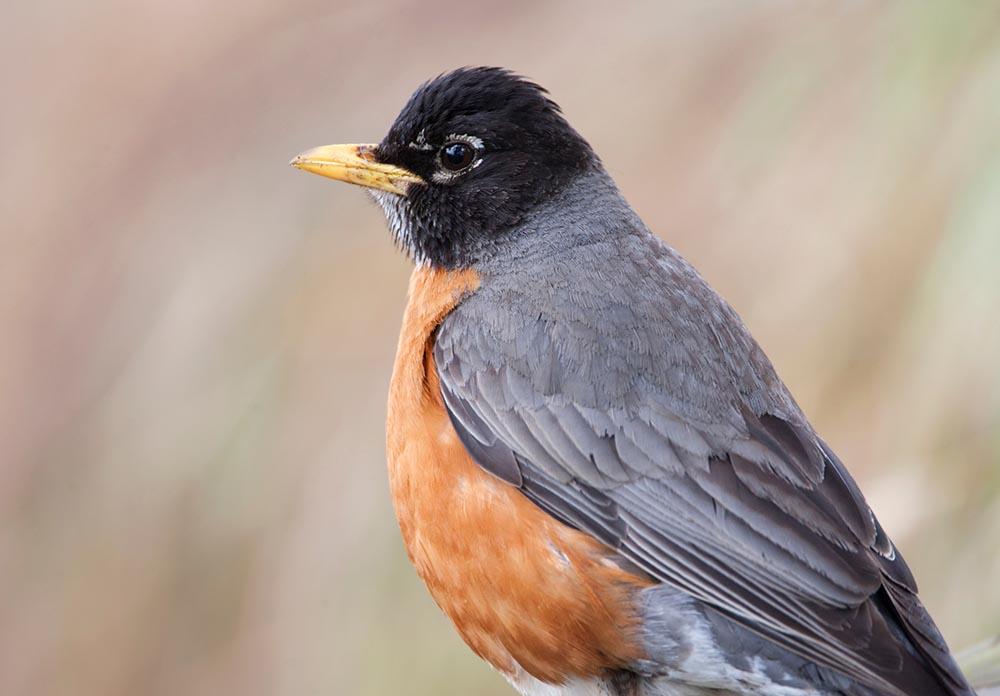
Breeding
The breeding process begins with the male courting the female by feeding it. During this period, the male will enter a lot of fights with other males. The males tend to visit the territory where the females will build the nest, and they may bring nesting material to their mates, although females alone are responsible for crafting the nest. Sometimes, before the first brood becomes independent, the females will begin working on a second nest. In that case, the males take over the responsibility of taking after the brood.
- Territorial
- Helps with collecting the nesting material
- Males attack predators and birds
- Social and friendly with humans
- Makes up to 180 trips during the day to collect nesting material
- Not involved in making the nests
- Have a short lifespan in the wilderness

Female Robin Overview
Personality / Character
Females are mainly responsible for building the nests. These birds are usually friendly and social creatures, but when defending their young or nests, they can become extremely territorial and aggressive. Female robins take full responsibility for finding a perfect nesting spot and constructing the nest. They will build their nests mainly using grass, mud for the middle part, and fine grass for the lining. You can occasionally see a female robin with mud on her chest during nesting time. Female robins have a habit of building multiple nests next to each other and then choosing one of them for nesting. They build nests in the crotch of a tree or shrub.
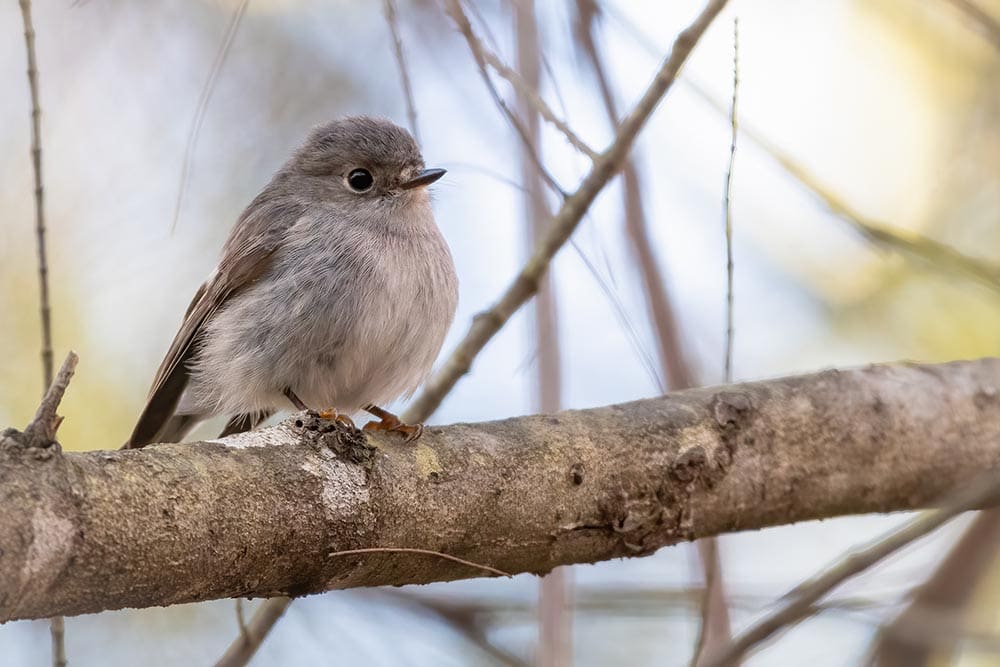
Health
Female robins have about two or three healthy broods each year, and each brood has from three to five eggs. If the female robin is healthy, the eggs will have stunning blue colors, which is a cause of a substance called biliverdin. This substance is found in only healthy females, and the brighter the blue shade becomes, the healthier the female.
Health Risks
In 2012, scientists examined a dead robin and found that the cause of its death was a particular parasite called Acanthocephalans. American Robins are a typical host for a specific parasite, Plagiorhynchus cylindraceus, which is a parasite that attacks many other songbirds.
American robins—both males and females—can also be hosts and carriers of pathogens that cause human diseases such as the West Nile Virus and Lyme disease.

Breeding
American robins breed during spring, from April through July. They begin laying eggs each spring, usually having two or three broods each year. The female will build multiple nests for each group of eggs and are responsible for creating the nests. They make the outer structure from grass, twigs, feathers, and grass. The females collect mud on their chests and smear the inside of their nests with the mud, which they later line with grass clippings to make a softer surface for their eggs.
Females will stay inside the nest throughout the entire incubation period, which is about 14 days long. When the nestlings become a bit older, the male robins will take the responsibility of looking after them during the day while the females attempt to create a second brood.
- Build nests on their own
- Social and friendly with humans
- Capable of making three broods per year
- When healthy, females lay beautiful bright blue eggs
- Have a short life span in the wild

Summing Up
Male and female robins look essentially the same, and while there are minor differences in appearance and behavior, it is challenging to differentiate males from females. If you spot two robins moving in pairs, there are great chances that one is a female and the other is a male. Still, observing the behavior of robins is a sure way to find out their gender, as they have different roles during nesting and breeding periods.
Featured Image Credit: (L) Jukka Jantunen, Shutterstock | (R) Danita Delimont, Shutterstock
About the Author Robert Sparks
Robert’s obsession with all things optical started early in life, when his optician father would bring home prototypes for Robert to play with. Nowadays, Robert is dedicated to helping others find the right optics for their needs. His hobbies include astronomy, astrophysics, and model building. Originally from Newark, NJ, he resides in Santa Fe, New Mexico, where the nighttime skies are filled with glittering stars.
Related Articles:
10 Types of Hummingbirds in Arkansas (With Pictures)
8 Types of Hummingbirds in Nebraska (With Pictures)
5 Types of Hummingbirds in Idaho (With Pictures)
3 Types of Hummingbirds in Mississippi (With Pictures)
8 Types of Hummingbirds in Kansas (With Pictures)
5 Types of Hummingbirds in West Virginia (With Pictures)
5 Types of Hummingbirds in Ohio (With Pictures)
Where Do Nuthatches Nest? Nuthatch Nesting Habits Explained
